This past weekend, Brad Nelson and I traveled to beautiful Miami Beach for Grand Prix Miami. For the week leading up to the tournament, we did a
reasonable amount of preparation that involved doing some VS videos and playing Magic Online. And when I say that “we” did preparation, I mean that Brad
did the preparation and I just blindly followed him into the abyss.
I know it sounds funny, but I haven’t played as much Magic lately as I have in the past. Basically every moment of every day for the last few months, I’ve
been sleeping, eating, or doing something involving Magic, whether that means traveling, playing, writing, or doing videos. The problem is that I haven’t
really been testing. I haven’t been grinding, and that used to be my strong suit. Lately, I’ve been piggybacking on some of the best
minds in the game, but I haven’t been putting in the work myself.
This ultimately leads to unfamiliarity with the deck I’m playing and results in failing at whatever tournament I’ve attended. I think that Legacy is an
exception to this, since it is much easier to theory-craft the format rather than grind out matches non-stop. As for Standard, it is all about small edges,
figuring out matchups, building your sideboard perfectly, and knowing exactly how you’re supposed to approach each opposing deck. After failing to login to
Magic Online for long stretches over the last few months, it is no wonder that my game is severely lacking.
This past weekend showcased just how glaring this hole is in my game and is the main reason that I’ve decided to buckle down and really put in the work.
Brad Nelson and I played the exact same 75 cards at Grand Prix Miami. As many of you probably know, he made the Top 4 while I failed to Day 2. Now I know
that being results oriented is not the best way to go about things, but that is a pretty glaring disparity between how our weekends went.
I know for a fact that I could have played better to win one of my matches, and probably could have sideboarded differently or mulliganed differently to
potentially win one or both of the other matches I lost. I played Junk Aristocrats, and the deck is just too hard to pick up and learn everything there is
to know about it without putting in the hours of work. Brad was willing to do this, while I was comfortable taking his data and trying to apply it myself.
The results were not ideal, and that is why I’m going to hit the ground hard for the next Grand Prix.
No excuses. No exceptions.
Creatures (24)
- 3 Skirsdag High Priest
- 4 Doomed Traveler
- 2 Young Wolf
- 4 Blood Artist
- 1 Obzedat, Ghost Council
- 4 Cartel Aristocrat
- 2 Varolz, the Scar-Striped
- 4 Voice of Resurgence
Planeswalkers (3)
Lands (25)
Spells (8)
Sideboard

This is the version of Junk Aristocrats that we played, and even though I went 6-3 with the list I was very happy with how it played and flowed. The fact
that Brad started off Day 1 at 9-0 certainly didn’t hurt, but I knew that my losses were almost assuredly because of my own failings. Sometimes there is
nothing you could have done differently to prevent a loss, but I find that people fall into this mindset a bit too much. You could have built your deck
differently, sideboarded differently, mulliganed differently, or sequenced your plays differently. While some of those sequences or mulligan decisions were
not inherently “correct,” the lines were there and you could have possibly seen them or taken them.
This is the kind of stuff that goes through my mind when I lose a match or bomb out of a tournament.
But we can’t dwell on the past too much, we must instead learn from it and move on. The future holds many great things, and we should not be blinded by our
past so much that we miss the opportunities before us. I think that losing a match of Magic is a much greater learning experience than winning. For one,
you tend to analyze every turn of every game of the match, looking for errors or different lines of play. When you win a match, it is usually chalked up on
the “did it right” side of things. You tend to forget about the minor misplay you made that didn’t end up costing you the game. You actively don’t want to
think about what you could have done differently because it doesn’t matter. You won. Scoreboard. #game.
When you lose, your brain becomes a microscope as you dredge through each millisecond of every turn. You start to imagine different lines you could have
taken to give yourself a chance, no matter how absurd they sound in the abstract.
What if you had bluffed that removal spell? What if you had missed a land drop on purpose so that your opponent played into your Supreme Verdict instead of
playing around it?
But instead, I just tried to discard those common traps and think about the tournament on a larger scale. Brad had just gone 9-0 and I watched most of his
matches on Sunday into the Top 4. I learned a great deal about myself during the tournament and now I know what I need to do.
Focus.
Mastering Modern
I have a week to break Modern. Well, technically I have four short days in which to film three videos, write an article and do two pieces for the SCG
Newsletter, but you get the idea. (Editor’s Note: I gotta make Todd earn that paycheck, ok?) The rest of the time I will dedicate to battling on Magic
Online, scouring decklists, and coming up with updates and variations on existing strategies. I will leave on Friday morning for the Grand Prix in Kansas
City, and I will be prepared. I don’t have anyone else to rely on this time, as neither Brad nor Gerry are going, so this will be my test. The weight of my
record will be placed fully on my shoulders and I will know whether I have succeeded or failed by my own merits.
At the moment, Modern isn’t really on many peoples’ radar. The PTQ season is still quite far away, as is the Modern Pro Tour. There haven’t been too many
big events featuring Modern since the banning of Bloodbraid Elf and Seething Song some months ago, so I feel like I could gain an edge on the rest of the
field if I put in the hours. Second Sunrise also getting the axe a little later helped alleviate some of the pressures of the Eggs combo decks, allowing
for more targeted hate from the sideboard.
One of the biggest challenges of Modern is building a sideboard that can interact with the combo decks that are most prevalent. At the moment, Birthing Pod
is a card that is incredibly hard to interact with for multiple reasons. For one, Birthing Pod isn’t even a part of the combo pieces. It is just another
amazing tool at their disposal for digging through their deck to find said pieces. Individually, many of the cards in Birthing Pod decks are pretty
mediocre, but their creatures all play very well together. Once they start to get two or three of them into play, interactions like Kitchen Finks and
Restoration Angel become a little awkward. This is especially true for aggressive decks.
Decks like Splinter Twin are a little easier to hate out, though few of them fold to the same cards. This means you are going to be spread thin if you want
to hit all your bases. If you are playing a “fair” deck, you will see exactly what I mean when you lose to the Slippery Bogle deck. And then if you make
room for Back to Nature and have to cut Torpor Orb, you are a lot worse off against Birthing Pod and Splinter Twin.
As I said, it can get convoluted quickly.
As a fair deck battling against an unfair format, I would almost certainly recommend cards that are much better as a catch-all rather than focusing too
much on the “dagger” sideboard cards. This means fewer things like Back to Nature and more things like Rakdos Charm. The more versatile your sideboard
cards can be, the more useful your sideboard will be as a whole. In a long tournament like a Grand Prix, this can be invaluable.
Learning from the Past
My previous experience with Modern is a long one, taking into consideration how long it has been around. I was qualified for the first Modern Pro Tour back
in Philadelphia a few years ago, and regularly streamed and battled in the format during its infancy. I played decks featuring all sorts of wacky
interactions, and I had fun doing it. That is why I was one of the biggest proponents of Modern during its development and early stages.
I was quite happy with Modern before many of the better cards got the banhammer, but I definitely understand what they are trying to do. They don’t want
combos that can easily win on turn three or before. They are aggressively taking control of the format and shaping it into exactly what they want it to be.
Their theories on what they want Modern to look like are admirable and I think it is in everyone’s best interest to give as much feedback to them as
possible. Modern is like the newborn baby and they’re just covering all the sharp corners around the house so that nothing bad ever happens.
Modern is not a rotating format. If a particularly strategy or interaction is annoying or overpowered, it isn’t going away “when the next block comes out.”
Because of this, WotC has to implement a system of seemingly heavy-handed bans to keep the format from becoming stale or boring. The worst thing for Magic
at the moment would be if Modern died, as WotC has put so much effort into making it a marquee format. The bans are being used so aggressively to help
ensure this won’t happen.
The backside of this argument is that taking away the cards that people love to play with is an easy way to alienate a player base. You can see this with
Legacy, as Brainstorm should almost assuredly be banned by now, but the players absolutely LOVE Brainstorm and don’t view it as a problem. The numbers for
Legacy attendance haven’t begun to dwindle, and as a result they are content with leaving it alone (for now).
Banning a card like Bloodbraid Elf is okay because people actively hate playing with it and against it. Sure, it probably wasn’t the best card in the old
Jund decks, but it was definitely one that we could all agree on letting go away. Deathrite Shaman might end up being the new sacred cow for Modern, but it
is easily a more powerful weapon than Bloodbraid Elf ever was. Before Deathrite Shaman, the deck was just a deck and not the deck. It
sped the Jund deck up by a full turn and added a lot of versatility to a fairly bland archetype. This is a lot of work for a creature that only costs one
mana and is very easy to cast.
Looking towards the future, I would be very wary of banning something like Deathrite Shaman. You made it. You printed it. It doesn’t do anything inherently
busted, but gives green and black decks an early drop that does a lot of things well. On top of that, everyone loves it, and it just doesn’t feel
ban-worthy if you know what I mean. (Editor’s Note: Trying…very…hard… to not go on Deathrite Shaman rant.) It doesn’t have the same negative connotations
as something like Seething Song or Hypergenesis. No one wants to stab out their own eyes when their opponent casts a Deathrite Shaman, which was exactly
the case for all players in a tournament when someone cast Second Sunrise.
Things are better now, wouldn’t you say?
So I have these ideas for Modern decks. I think they’re good, but I don’t know if they’re good enough. Over the next few days, I’ll be working on something
like 5-10 different decks or archetypes on Magic Online in preparation for the Grand Prix, and I hope to come out of it with something awesome. It has been
a while since I sat down and put my nose to the grindstone and came back with something I was proud of. Right now, I’m playing against the clock, and every
minute I waste watching television or browsing on Facebook is another minute I could be figuring out whether a card or deck is good.
Tezzeret
While perusing some of the decks from the most recent Modern Daily Event, I found this little gem:
Creatures (9)
Planeswalkers (3)
Lands (24)
Spells (24)
- 1 Ensnaring Bridge
- 2 Serum Visions
- 2 Vedalken Shackles
- 4 Thirst for Knowledge
- 1 Pyrite Spellbomb
- 2 Chalice of the Void
- 2 Engineered Explosives
- 1 Pithing Needle
- 3 Spell Snare
- 2 Cryptic Command
- 1 Relic of Progenitus
- 1 Mox Opal
- 1 Torpor Orb
- 1 Grafdigger's Cage
Sideboard

Let me be clear: I don’t think this deck is good. In fact, after playing a few matches with it, I think it is just terrible. However, I did learn something
from just a few matches with the deck, and I’m hoping to apply those to building a different brew that features a lot of the same elements.
In the first round of my first Modern Pro Tour, I played against Gabriel Nassif who was piloting a U/B Tezzeret deck featuring many of the same cards. He
used Ensnaring Bridge to lock out my hardcast Emrakul, the Aeons Torn, and eventually killed me with Tezzeret, Agent of Bolas’s Ultimate ability. It was
pretty disheartening to lose the first round of an event that I was so excited for, but I also learned a lot from that match.
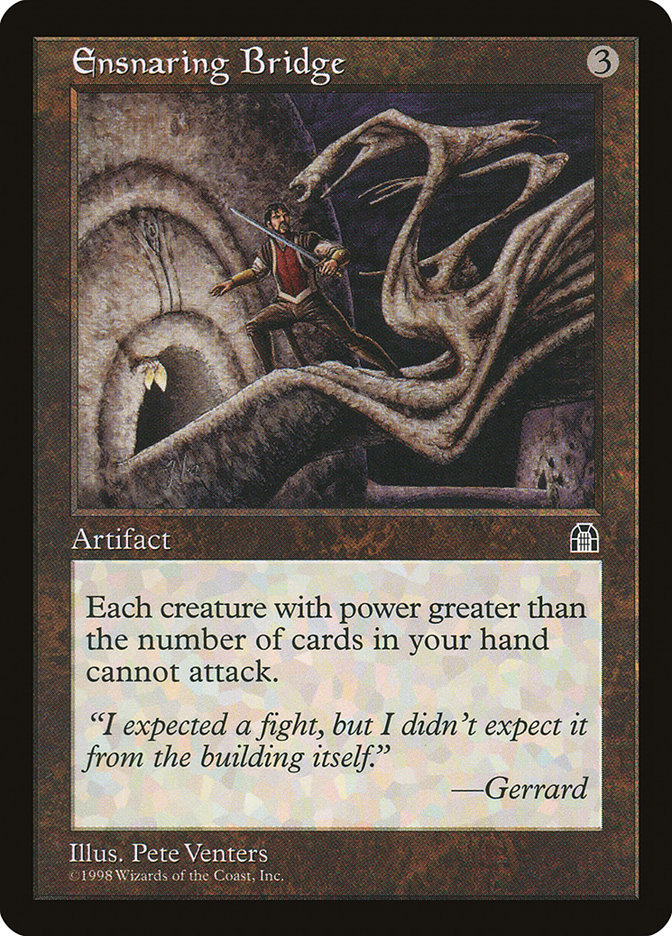
For one, Ensnaring Bridge can be a backbreaker if you can protect it. Many of the decks in the format are cold to it if you can empty your hand and then
protect it with something like Spellskite. Tezzeret, Agent of Bolas is a much more powerful card in Modern than Tezzeret the Seeker, though they function
quite differently. If your deck has a minor tutor package to utilize Tezzeret the Seeker’s –X ability, you can make it work to your advantage. I would much
prefer a deck that acts more like a ramp deck than a sit-back control deck, though. It is so difficult to contain all of the things people are trying to do
in this format, and a handful of Cryptic Commands and Spell Snares just isn’t going to cut it.
I also learned from playing with the newer Tezzeret the Seeker deck that Vedalken Shackles is a card worth building your deck around, though it is quite
expensive to cast and activate. I constantly found myself on the back foot against a variety of decks, and without enough time to gain a foothold. The lack
of early/cheap spot removal put me into this predicament, and is a flaw that is easily remedied.
When your opponent is locked out of the game through a combination of multiple artifacts, something like an extra mana isn’t going to help them that much.
This makes me want to splash white for Path to Exile, though I can understand the drawback is not insignificant. Given how mana-intensive so many of the
decks in Modern are, I think that splashing for Lightning Bolt might be a better option.
But what else could red add to the deck other than Lightning Bolt? Pyroclasm also seems pretty solid at the moment, due to the nature of Birthing Pod decks
and their desire to overextend. The Pyroclasms out of Scapeshift have been doing great things for them, so why wouldn’t they work in this kind of a shell?
But if you play Pyroclasm, should you still include Lightning Bolt or is Pyroclasm enough? I considered, for just a brief moment, playing Damnation during
the early stages of this deck’s development. It might be a consideration for the sideboard, but I think Pyroclasm gives us answers to many of the
problematic cards that we could face. The main culprit?
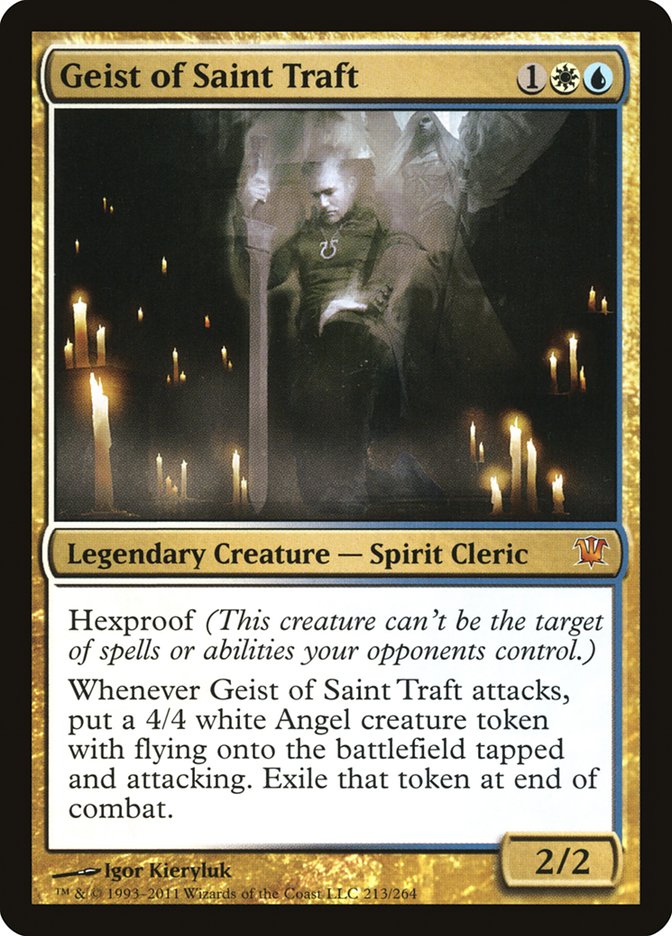
Geist of Saint Traft hits hard and I mean really hard. A three mana creature that hits for six damage and can’t be targeted is difficult to
ignore. Pyroclasm is a little worse against some decks than Lightning Bolt, but I think I would rather hedge and give myself the best opportunity to beat
the cards/decks I am bad against.
If we’re playing Pyroclasm as our main source of early removal, what other weapons can we utilize in our fight against creatures? I want a card that can
drain their resources, while also working flawlessly to progress my own gameplan. I think I may have found the solution, though it is quite difficult on
the manabase:

Remember that Geist of Saint Traft card I was talking about? I think we’ll be OK now. However, if we want to incorporate Vedalken Shackles and Liliana of
the Veil into the same deck as Pyroclasm, we’re going to need to get a little creative. This probably means playing too many shocklands for my own comfort,
but the sacrifice is probably worth it.
Liliana of the Veil can disrupt the opponent by attacking their creatures, attacking their hand, and shrinking our own hand for Ensnaring Bridge. This kind
of soft-lock can be invaluable in some matchups, but building the manabase to support this strain is not going to be easy. But hey, if people can play four
colors without any problems, why can’t I play three?
First of all, the fetchlands in the format don’t really fit our deck well.
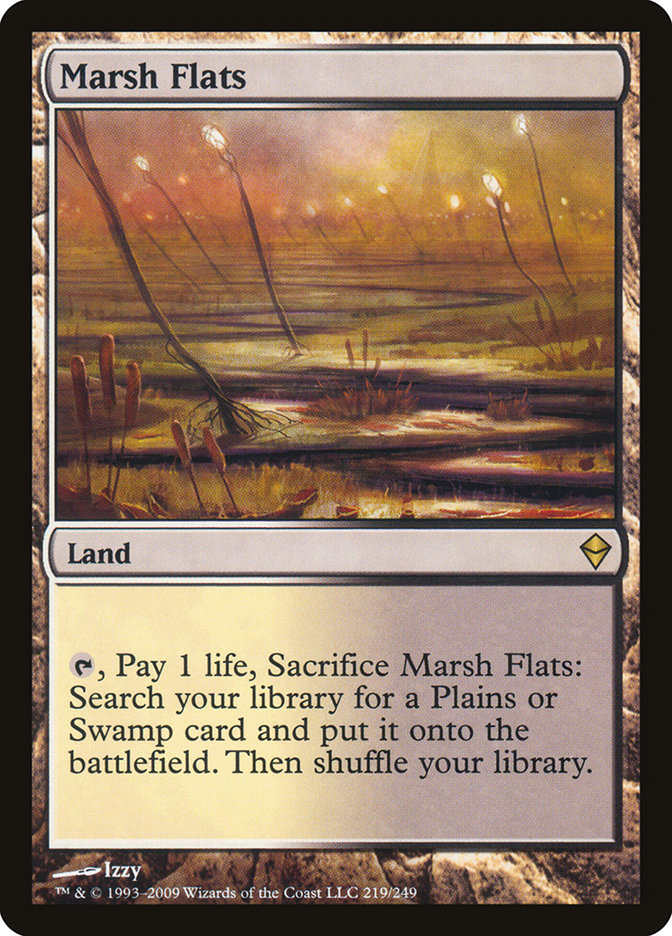
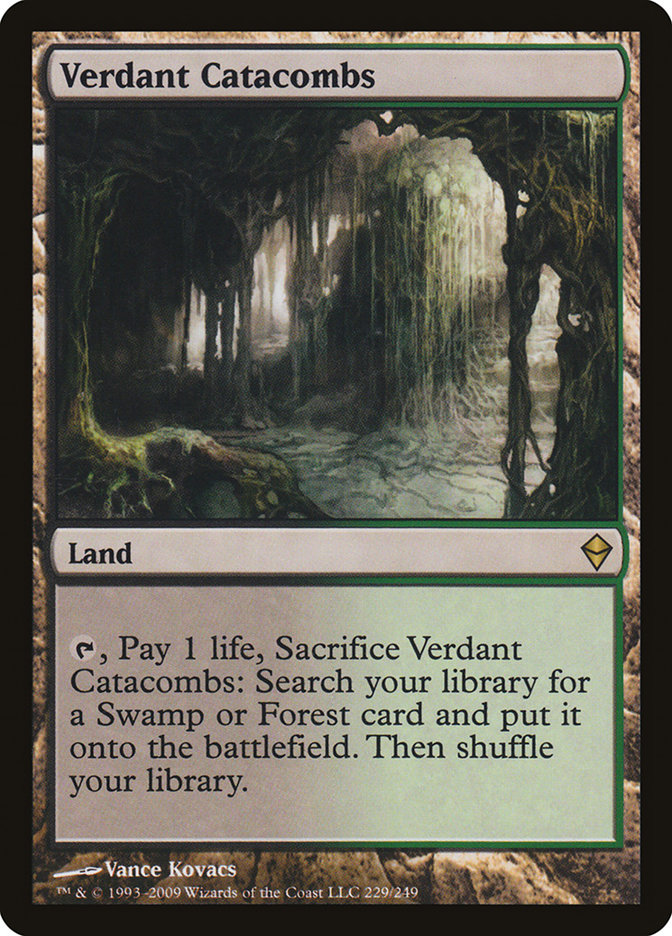
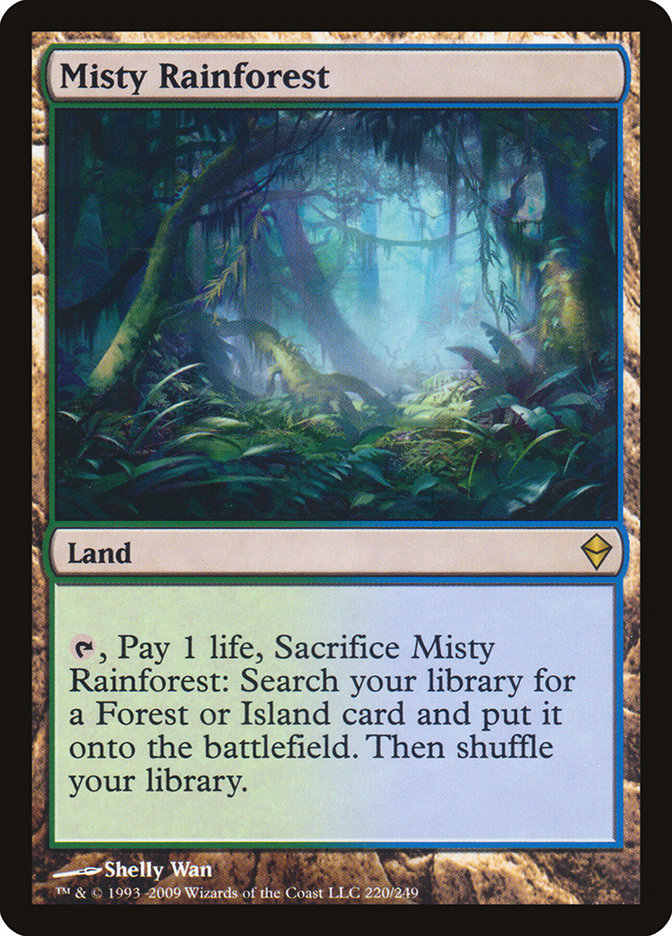
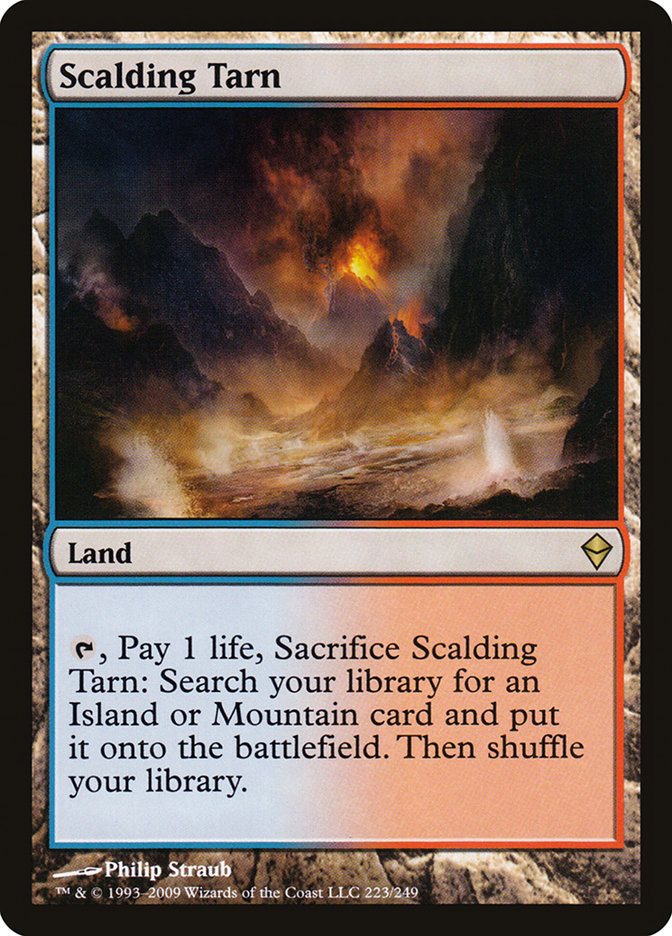
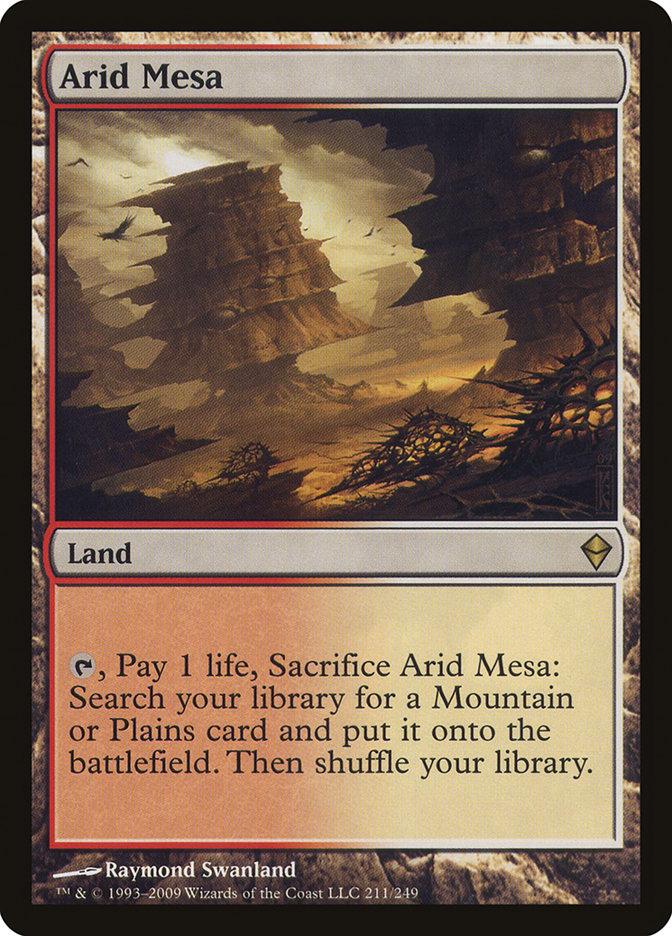
The only one of these lands that fits perfectly into our deck is Scalding Tarn, but the strain that the spells are putting on the manabase can’t be ignored
and will likely need a lot of tuning. I want to play enough islands to support Vedalken Shackles, but also some utility lands and possibly a Darksteel
Citadel for Trinket Mage.
This means playing some off-color fetchlands, but Misty Rainforest doesn’t really do enough for our deck if we want to play multiple copies of Blood Crypt.
This probably means that one Blood Crypt is likely the maximum, for those reasons as well as Vedalken Shackles. We can’t afford to play too many
non-islands.
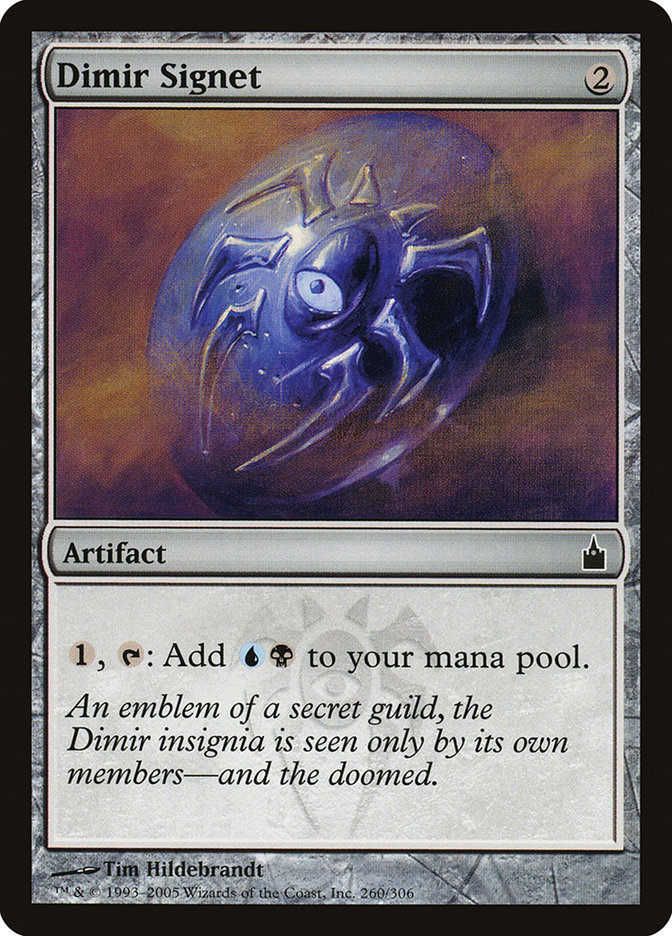
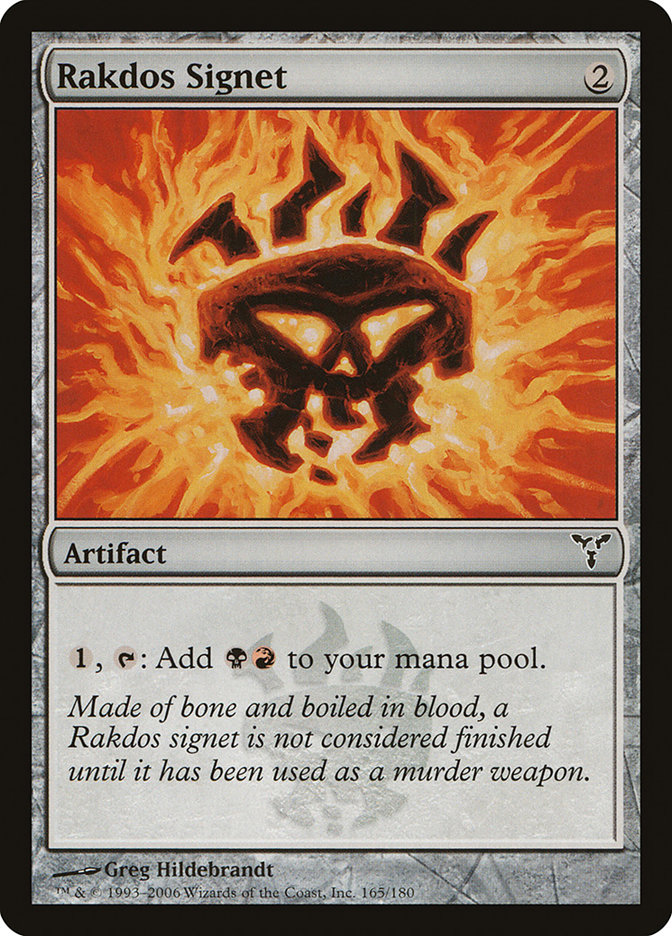
Building the manabase also includes Signets. These will help ramp us into Tezzeret a turn early, and give us more artifacts for his ability. They also work
well in conjunction with Thirst for Knowledge, giving us a way to use the extra cards more efficiently as well as being able to pitch extras that we don’t
need. They also allow us to play Blood Moon with impunity.
Thoughtseize is probably tough for us to play but a necessary evil. We just don’t have enough cards to interact with something like Splinter Twin without
it, though we will likely be taking far too much damage to cast it early. I’ve considered Inquisition of Kozilek, but it just doesn’t do nearly as much as
Thoughtseize in the spots where you need it most. Against aggressive decks, we can always just pitch them to Liliana of the Veil or Thirst for Knowledge.
After taking a lot of these factors into consideration, here is the list I will begin testing over the next day or so, and figuring out if it has any shot
at being viable.
Creatures (5)
Planeswalkers (7)
Lands (22)
Spells (26)

With all new decks, this one will have some holes that need to be fixed. I am trying out a lot of new ideas all at once, but I’m trying to attack the
format from a different perspective. I love a lot of what this deck is trying to do, but I might just be trying to do too much. With a few matches under my
belt, I’m sure I’ll have more to contribute.
I’m really looking forward to this weekend at Grand Prix Kansas City. The last time I was there, I ended up beating Brad Nelson in the Top 4 playoff for
the National Team in 2009, so there are definitely some good memories. Maybe I can recreate that success.
While I don’t know what I’m playing just yet, I hope you enjoyed the above exercise. I was building the deck as we went along, making changes all the
while, and I am pretty excited about the finished product. Check my updates on Twitter and Facebook over the next few days if you’re going to the Grand
Prix or just have a general interest in Modern, as I should be posting the results of my testing.
Thanks for reading!
strong sad on Magic Online
@strong_sad on Twitter
